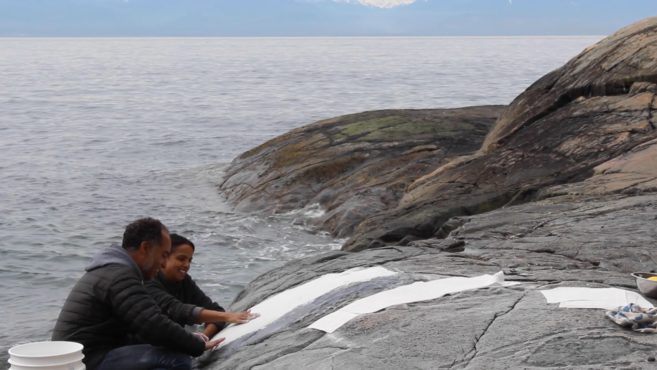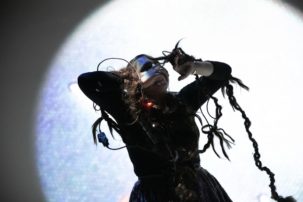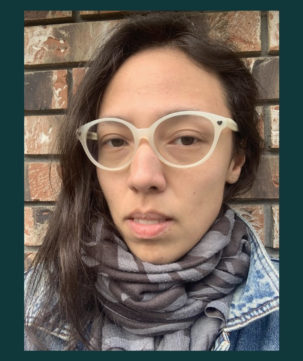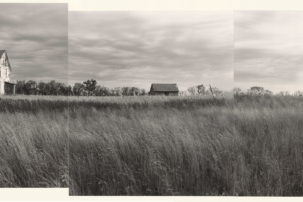Early in 2016, before most progressives began to take seriously the possibility that Trump might actually become president, American artist Andrea Fraser was invited to participate in an event at the Museum of Contemporary Art in Los Angeles. During that evening, she learned that Trump’s campaign-finance chair, Steven Mnuchin, was on MoCA’s Board of Directors, a revelation that disturbed her. It was this, and subsequent revelations, that led Fraser to begin research for what would become her 900-plus-page book 2016 in Museums, Money, and Politics (Westreich Wagner Publications, the CCA Wattis Institute for Contemporary Arts, and the MIT Press, 2018).
2016 has been described both as a work of institutional critique and as a reference text that resembles a telephone book in size and structure. In it, Fraser meticulously outlines relationships between US museum board members and electoral politics. Through the act of naming the recorded political contributions that Board members and trustees of these art and not-for-profit institutions made to Democratic and Republican nominees during the 2016 election—the most expensive election in US history—Fraser makes transparent the plutocratic workings of US museums and art institutions. In doing so, Fraser points to how art institutions purporting to support socially progressive causes in their exhibitions and programs might be undermining these causes at the leadership level.
Fraser is a pioneering artist of institutional critique with an esteemed practice of working across conceptualism and context art, feminist art, video and performance since the early 1980s. She is a founding member of the V-Girls collective, which combined third-wave feminist concerns and institutional critique through collaborative performances and talks over the decade of 1986–1996. She is also Professor of Art at UCLA, where she teaches new genres and interdisciplinary studio and serves as the Department Chair. Recently, she was in Canada to give a talk at the Vancouver Art Book Fair. In the week following the US midterm elections, I called Fraser up to discuss her thoughts on class in contemporary art, and whether her views on institutional critique have changed since the 2016 election.
I think artists and intellectuals try to convince themselves that what they can do as artists and intellectuals is politically effective, but we can also use that as an excuse for not stepping up to more direct political participation, which I think is really necessary right now.
Lauren Fournier: So we’re almost one week out from the midterms, and the Democrats took back the House. How are you feeling?
Andrea Fraser: I’m feeling pretty positive about the midterms. Of course, the Senate was a disappointment, and the fact that the midterms were followed immediately by the forced resignation of the attorney general, and the outrageous—and unsupported by evidence—charges of voter fraud in Georgia and Florida was alarming. The assault on democratic institutions in the United States continues. On the one hand, with the Democrats winning back the House there is the promise of some investigation into corruption and resistance to the undermining of voting rights. On the other hand, the fact that these attacks intensified immediately after the election is scary. It’s feeling sort of apocalyptic right now. I’m also pretty close to the fires happening in Southern California.
I canvassed the weekend before the election with a group called Artists 4 Democracy. I helped organize two buses of artists to go down to the California 45th District, a district in Orange County where UC Irvine is, to canvass for Katie Porter. I also canvassed for Katie Hill in the 25th District, which is just north of Los Angeles, where CalArts is. It felt great to be directly involved in some way—you know, and not just doing books like 2016 in Museums, Money, and Politics. I think artists and intellectuals try to convince themselves that what they can do as artists and intellectuals is politically effective, but we can also use that as an excuse for not stepping up to more direct political participation, which I think is really necessary right now. I know other artists who canvassed in the Los Angeles area, as well as upstate New York and parts of Pennsylvania, and I’m sure it’s happening in other parts of the country too.
LF: Yes, over the past year some artist friends of mine in Kansas were canvassing for Sharice Davids, who flipped the Kansas seat and is the first openly LGBTQ Kansan—and first Indigenous/Native American woman, alongside Deb Haaland—to hold a seat in Congress. It’s so exciting! Of course, there’s a lot of work to be done to sustain this “blue wave” until 2020. While I’m wary of giving too much focus in this interview to President Trump—perhaps unavoidable given the focus of your book on the 2016 US election—I do wonder whether and how your views on the efficacy and strategies of institutional critique have shifted since the 2016 election. I think of our era of “post-fact”/”fake news,” where the rise of populism seems tied to the increasing polarization of the left and the right, and the role that social media—as these kinds of echo chambers—play in entrenching these divides. I think of institutional critique and some more ironizing, even parafictional, performance practices—whether your own, or an artist like Walid Raad who really extends that parafictional element. With this context in mind, what can institutional critique do today?
AF: Institutional critique is defined in different ways by different people. I have defined it as a practice of critically reflexive site-specificity. I understand institutional critique as an ethical practice, as distinct from a political practice. I think of politics, fundamentally, as the pursuit of power. Whether we think of politics as practiced by people who have power or don’t, who are dominant or dominated, politics is about getting more power. All of us have privileges as well as privations, and occupy positions that are relatively dominant as well as relatively dominated—and we engage in politics from our position as relatively dominated and relatively deprived, no matter how privileged we may be in many ways.
In contrast, I think of institutional critique as an ethical practice from a position of being relatively dominant and endowed with power, which aims to mitigate the exercise and impact of that power. For artists, that means engaging relations of power in a critically reflective way, from our position as dominant and from the perspective of our privileges. And I think that is as necessary now as ever. Institutional critique, like any kind of critical practice, needs to be continually revived and reconsidered in the context of the specific situation, relations and objects that one wants to engage, impact and transform. That is one of the founding principles of institutional critique, which developed in part out of a critique of historical and neo-avant-garde movements and a recognition that any “revolutionary” impacts of avant-garde movements were necessarily completely specific, historically, and also transitory.
One of the main critiques of institutional critique is “Oh, it has become institutionalized.” I call that the zombie argument that just won’t die. It just comes back and comes back and comes back! The idea that institutional critique would not be institutionalized is an idealist one. Of course it’s going to be institutionalized! If one is a materialist, and believes in the historical and social specificity of any kind of phenomena, then of course over time institutional critique will be institutionalized. Which is why institutional critique needs to be a site-specific and responsive practice.
But more specifically, with respect to our current political regime, yes, I think institutional critique remains important today. After the 2016 election, I wrote a text called “Toward a Reflexive Resistance” as an artist’s commission for X-TRA that applied a reflexive Bourdieusian critique to the election and the discourse of resistance that emerged afterward.
The fact that board members are required to make personal financial contributions, of up to millions of dollars in larger institutions, is what renders museums and other not-for-profit organizations de facto plutocratic.
LF: If politics is about power, then power is arguably about money—especially when it comes to the politics of the donor class and their influence on electoral politics in the United States—an issue that you take up extensively in 2016. In your conversation with Helen Molesworth, you mention the obvious need to diversify when it comes to who sits on the boards of museums and galleries. Are you at all optimistic about the possibility of class diversification of these boards, or in the art world broadly speaking? I know I’m a working-class person myself, who even in Canada—with our country’s relatively robust public funding of the arts, and with my white privilege—can feel frustrated and out of place in these “elevated” fields of art and academia.
AF: Class has been at the core of my work in institutional critique for some time. My examination of class, philanthropy, public policy and plutocracy in 2016 goes back to research I started in the mid-80s in works leading up to Museum Highlights: A Gallery Talk. I don’t know if I had the word “plutocracy” at my disposal yet, but it was fundamentally the same research that I returned to as I wrote the introduction to 2016. In many ways, to the extent that there was ever much of a critical examination of class in contemporary art, it was overwhelmed by the early 1990s with the rise of multiculturalism and identity politics. I do hope that there are more artists starting to engage with these issues, but there haven’t been many.
As a Professor at UCLA, looking at a hundred applications to my area of the graduate program every year, I’ve been shocked that even with the rise of Trump and the election, and before that with the sub-prime mortgage crisis and the collapse of the middle class and Occupy Wall Street, there has been very, very little work that engages with class or electoral politics in a direct or even an indirect way. If there are young artists out there doing this work, I imagine some of them would apply to my program [laughs]. I have come to understand institutional critique and a lot of other forms of cultural critique and even politics as an enactment of an ambivalent relationship to authority and institutions: we may attack institutions and those who take up authority in institutions, but usually without really stepping up ourselves. We attack the economic power held by the donor class, without really taking on that power as it finances our own field, much less the class power at work in the institution of artistic practice itself, where class diversity has been lacking in ways not unlike some museum boards.
I know very few artists with working-class backgrounds. I have my own complicated class background with downwardly mobile parents, who became hippies in my early childhood: there was no economic security, but there was a tremendous amount of cultural capital. Which is partly what lead me to do the kind of work that I do.
But yeah, in terms of the diversification of museum boards, there have been moves in US museums to add ethnic and racial diversity to their boards, which usually means waving the personal financial contribution requirements. And there’s been a move by a few museum to include artists and scholars on their boards. But the real issue, from my perspective, is the collapsing of patronage and governance on these boards. The fact that board members are required to make personal financial contributions, of up to millions of dollars in larger institutions, is what renders museums and other not-for-profit organizations de facto plutocratic—with all but the very wealth excluded from a role in governance.
LF: You’ve emphasized the need for artists to engage in direct political participation in addition to their critical practices as artists. Could you tell me more about the Artists Political Action Network and what they do? You mentioned the canvassing work you’ve been doing.
Institutional critique, like any kind of critical practice, needs to be continually revived and reconsidered in the context of the specific situation, relations and objects that one wants to engage, impact and transform.
AF: The Hammer Museum here in Los Angeles has an Artist’s Council. The Artist’s Council had a meeting scheduled the day after the election in 2016 and everyone there was totally devastated. It was out of that meeting that the Artists Political Action Network (APAN) emerged. The initial organizing committee of APAN were all people on the Hammer Artist’s Council, which ended up posing some challenges for the group as it developed. After a few months of meeting three times a week to try and build an organization, there was quite a bit of burnout and the membership changed. More recently, the name also changed, to Artists 4 Democracy. We formed action committees focused on different issues—whatever people wanted to work on. One of the most active was the women’s action committee, which got involved in lobbying members of Congress, like Adam Schiff and Dianne Feinstein, on healthcare and education and other issues of relevance to artists and women. One of the other action committees that was quite active from the start was Flip It 2018, which connected with a group called Swing Left (which formed after the 2016 election with the specific aim of electing a Democratic majority to the House of Representatives). Some of that activity, from the beginning, was focused on the California 25th District: which, as I mentioned, is just north of Los Angeles, where CalArts is. We started thinking specifically about districts in California with Republicans in Congress that had art schools or art communities. And in the run-up to the midterm elections, that energy was refocused on getting artists out to canvass for Democratic candidates in a couple of neighbouring districts.
LF: So, shifting gears a little bit: your new book is painstakingly thorough.
AF: OCD, in other words!
LF: Yes. I have a love for that mode, personally! It seems like bureaucracy is having a special moment in contemporary art right now, whether it’s your new book, which was published in 2018, or Adrian Piper’s The Probable Trust Registry which I saw at the Hamburger Bahnhof last summer (2017)—its something that feminist artists working conceptually are taking up and extending in aesthetic ways. After reading your book, I’ve been thinking about how bureaucracy structures our lives and our inter-personal relationships, how it mediates our communications and transactions. I’m curious how you, as an artist and as a university Professor/Chair, understand this relationship between bureaucracy and contemporary art in your own life, or how it shaped your approach to putting this book together.
AF: I think Americans have less direct experience with bureaucracy than Canadians. I presented 2016 at the Vancouver Art Book Fair last month, and also led a workshop that focused on WAGE, which is where CARFAC came up. I was really impressed by how knowledgeable and engaged the participants in those events were about local politics and the politics of local institutions—much more so than I’ve encountered in the United States. But I also sense a kind of cynicism connected to dealing with bureaucracy. In the US, the fields that artists inhabit have been so privatized that I think most artists have almost no direct experience with public bureaucracy—you know, besides the Department of Motor Vehicles.
Among the frameworks within which institutional critique developed was that of the Frankfurt School’s critique of administered society and bureaucratic institutions. As my own thinking about institutional critique developed, that particular critique (of bureaucracy) took a back seat for me when I started to focus on the development of privatized institutions in the US as alternatives to, if not attacks on, public bureaucracies. From my American vantage point, the critique of bureaucracy that developed in the European context began to look like a potentially cynical contribution to the undermining of the public sector. In the US, the attack of the public sector and public institutions as bureaucratic has been integral to the right wing’s strategy for a long time. So I’m wary about critiques of bureaucracy.
On the other hand, one has to consider the intersection between political and psychological structures, especially when it comes to art. I see minimalism and conceptualism and much of the work that came out of conceptual art as fundamentally obsessive compulsive. [laughs] There is that side of what, in social or political theory, might be described as the bureaucratic and administrative.
I think that calling out Republicans is a lot easier for people in the art world, and for progressives on these boards and in these institutions, than looking at the systemic issues of plutocracy and philanthropy.
LF: The distinction you’ve raised between Canada and the United States is something I’ve been thinking about in relation to your book. As you seem to be at least a little bit aware, public funding structures are very different here in Canada than they are in the States. We have a long history of artist-run centres, for example, where practicing artists are supposed to make up the majority of folks serving on the board. And when you compare America’s commercial art market to Canada’s, Canada’s is negligible—something that might be attributed in part to our relatively robust funding structures and grants for professional artists, and the relative lack of urgency around sales. And all of this presents a very different relationship to wealth and economics than it does for artists working in the States. And when Canadian artists I know move to the States and change their bio line to “based in Brooklyn,” it seems like a shift starts to happen around how they’re positioned in relation to the market, or how they understand their art practice and the ways in which they sustain their practice in relation to money.
AF: Yes, it’s very different. Outside of the United States, I’ve spent the most time working in Germany, where there is a great diversity of institutions: public institutions, membership organizations like Kunstvereins, private museums, artist-run organizations, as well as an art market. To me, that seems to be the best scenario.
LF: There’s a feminist politics of disclosure that has been re-energized in the age of #MeToo and other movements like #TimesUp. I think of Chris Kraus’s work of naming the bad behaviour—mainly sexism—of known people in the art and theory world in works like I Love Dick, and how your work of naming board members and their political donations is a similar gesture of making these actions transparent. I know that the information you include in the book is publicly available through the Federal Election Commission (FEC). Of course, you’ve compiled and organized this information in a way that is accessible for people in the art world. What has the response to your book been like? Have people been angry? Unfazed?
AF: Yes, it’s all public information. I actually left out the home addresses of board members, which is included in the FEC records. I needed that info to verify the identity of the contributors, but I decided to leave it out of the book. I have artist colleagues who are in the book and are positive about it. But there is only one person in the book who I didn’t know previously who reached out to me because of it: a member of the MoMA board, who bought 30 copies! He’s totally thrilled by it and we have started a great dialogue.
I do wonder how many of the people in the book have seen it, or are aware of it. At the first talk I did about the book, Gregg Bordowitz, who was in the audience, sort of called me out for calling people out. He asked whether I was practicing the politics of shaming. I don’t believe I am, actually. The book has its origins in an effort to get Steven Mnuchin off the board of MoCA in Los Angeles. It was motivated by my horror in finding Trump supporters on the boards of art institutions. These people have a fiduciary responsibility to defend the missions of their organizations and are supporting politicians who were very directly undermining those missions. But as the project developed, my focus shifted from Trump supporters to the broader systemic issues of plutocracy. I think that calling out Republicans is a lot easier for people in the art world, and for progressives on these boards and in these institutions, than looking at the systemic issues of plutocracy and philanthropy.
LF: After having written this book, should artists take into account the constitution of boards and their political alignments when they’re making decisions about exhibitions and where they will show their work?
AF: I hope the book inspires artists to look up collectors before they sell their work to people, and to look up board members and museum patrons who are directly supporting their exhibitions. Given the degree to which these boards tend to be mixed, I’m not sure how far an artist would go beyond that. I see the impact of the book happening more, ironically perhaps, through the conversations that it might initiate within museums in the process of fundraising and board development. At a certain point I realized that one of the audiences for this book is people who fundraise for museums, including museum directors, board chairs and executive committees—the people who are involved in nominating people to serve on boards. I hope this book makes the politics of board members or potential board members, and patrons or potential patrons, part of those conversations. Are the political activities of potential patrons and board members consistent with and in the best interest of those institutions? That’s the question I hope this book raises inside museums.
The first book launch for 2016 was hosted by co-publishers Thea Westreich Wagner and Ethan Wagner, who were art consultants in New York before they retired. Someone told me that there was an art dealer at the launch who made a comment like, “This book is going to help me update my Rolodex!” It’s hard to know whether that comment is deeply cynical—you know, about just expanding the Rolodex—or about updating the Rolodex to eliminate the right-wing collectors. It’s hard to know, given how cynical the art world really is.
LF: So, what comes next for you? I imagine you might need some rest after writing this book, and that your position at UCLA keeps you busy.
AF: Right now I’m working on another big book: a 600-plus-page collection of interviews and interview-based works, from 1990 to the present. Hopefully that will be out in early 2019. Unfortunately, it’s too late for this interview to be in it!
This interview has been edited and condensed. 2016 in Museums, Money, and Politics, co-published by MIT Press, Westreich Wagner Publications, and the CCA Wattis Institute for Contemporary Arts, is available now at mitpress.mit.edu.

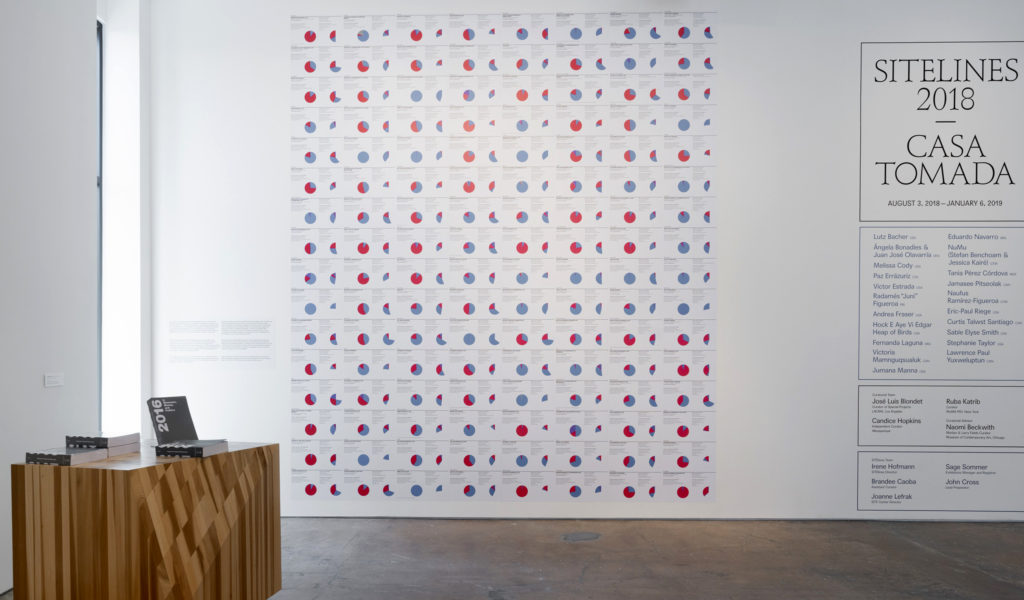 Andrea Fraser, 2016 in Museums, Money, and Politics, 2018, vinyl, 3.7m x 4.6m. Install view at SITE Santa Fe in SITElines Casa tomada, Santa Fe, New Mexico, 2018. Photo by Eric Swanson. Copyright Andrea Fraser.
Andrea Fraser, 2016 in Museums, Money, and Politics, 2018, vinyl, 3.7m x 4.6m. Install view at SITE Santa Fe in SITElines Casa tomada, Santa Fe, New Mexico, 2018. Photo by Eric Swanson. Copyright Andrea Fraser.
